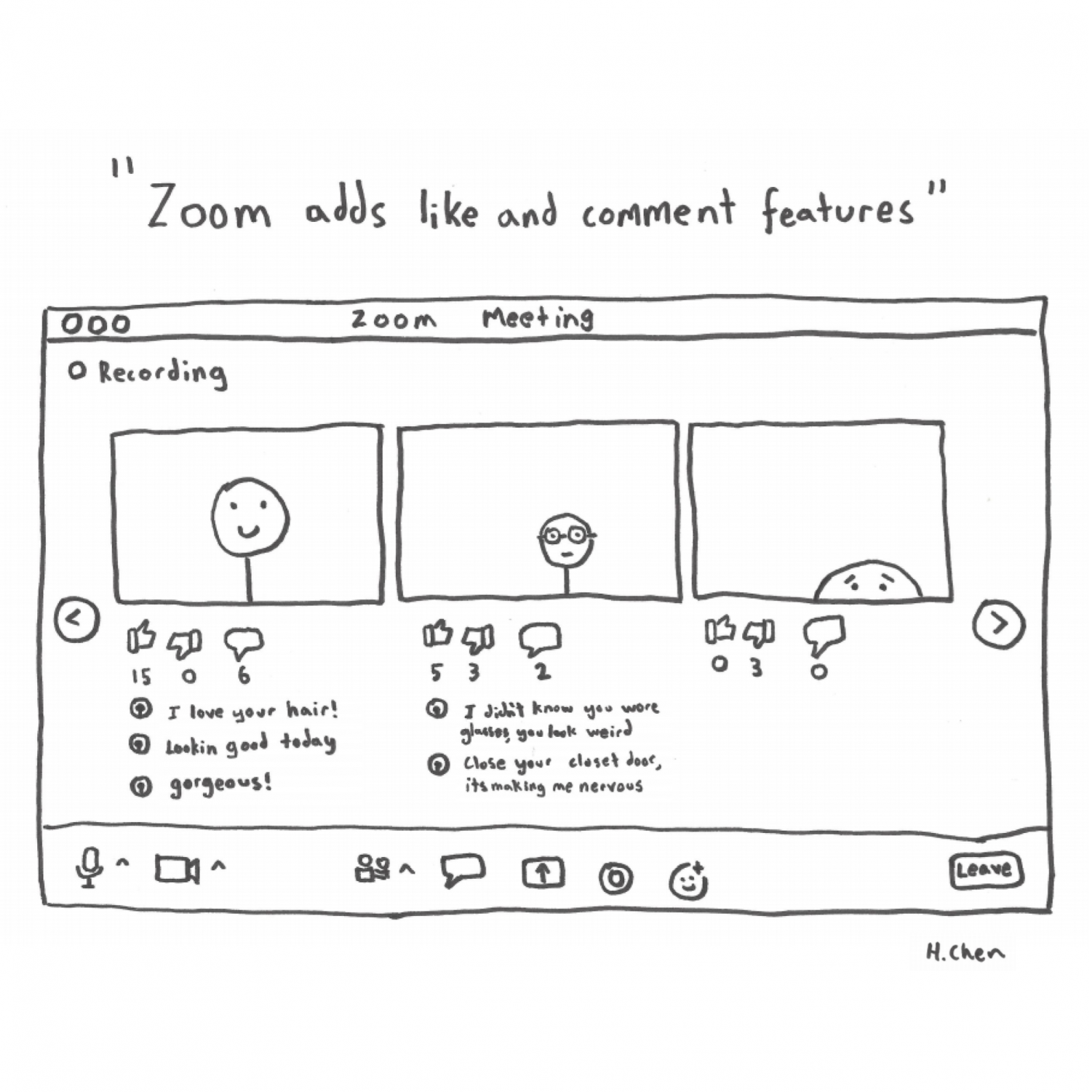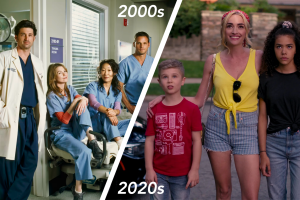The trials and tribulations of a Wednesday
November 5, 2020

This year, our bedrooms have become our classrooms, blurring the lines between personal and academic time and leaving us to redefine who we are as 2D faces on a screen. As winter approaches, we brace ourselves for an emotionally fraught few months: the changing seasons replacing our excitement for the new year as we submit to the reality that this year of difficult adjustments will continue with a vengeance. In this strange new world it’s become ever more difficult to set aside time for personal development. At such a significant stage in our lives, it’s critical that we have time to independently discover who we are.
The school year has introduced seemingly endless challenges for students and teachers alike. Though the struggles faced by staff and students often differ, one irrefutable point of contemptment is that we are spending far too much time on Zoom. This new part of our lives is frustrating and exhausting, distinctly foreign from the normalcy and routines we formed throughout years past. Virtual Zoom classes are something we have been forced to come to terms with, but we still should aspire to improve the quality of our lives in any way we can.
In the spring of 2020, with distance learning still in its first stages, students were able to make the most of the new school system by enjoying newfound freedoms in the day. With largely asynchronous schedules, we chose when and how to do assignments, exploring the independence of working from home and figuring out how to operate in our new realities. While we longed to return to campus and normal life, the chance to regulate our days as we wished and feel responsible for ourselves was a surprising positive to come from the changes. Lack of interaction as well as the implementation of pass/fail grades may have led to less productive learning, but we continued to self-manage our school work and stay on top of assignments.
Beginning Zoom classes in the fall brought on a new wave of anxiety. Being on camera for hours on end takes a serious mental toll; it’s a constant reminder that you are being watched and recorded, an additional layer of self-consciousness added onto the existing insecurities of being a teenager. The anxiety often associated with social media has found its way into our school hours, perpetuated by Zoom’s video filters which allow participants to artificially alter their appearances. Zoom classes can feel like walking around with a spotlight on you at all times. It’s exhausting.
Students’ discomfort is undeniable; classes are consistently quiet as teachers urge us to talk and breakout rooms often increase the awkwardness. Though some students collaborate, many use breakout rooms as an opportunity to shut off their cameras and mute their microphones, opting to stew in silence instead of risking being left unanswered by their classmates. At times, each Zoom class is another step into a hypnotic void, we stare at our screens like robots and lack a connection to our outside surroundings. The stress of being on camera coupled with the anxiety of breakout rooms distract from our purpose in school: learning.
The introduction of asynchronous Wednesdays was a glimmer of hope for many, becoming an opportunity to gain back a sense of independence and have a day free from the anxieties of Zoom. Getting to break away from Zoom and choose what our day looks like allows us to feel more in control in a time where we feel anything but. It’s a chance to breathe and give ourselves a moment to be present in our teenage world, free from the virtual reality which is Zoom. We can run outside during the middle of the day or bake cookies in between assignments. Asynchronous learning allows us to take advantage of our time away from school and spend more time pursuing our personal passions, helping us feel like individuals again, not just squares in a Zoom classroom.
Our extracurricular activities such as clubs, drama and robotics, which were previously breaks in the day to relax and casually talk to friends, have all been moved online, adding more Zoom time to our already technology-filled days. Is it worth sacrificing these activities to spend less time on Zoom? Taking part in these activities, core aspects of many students’ identities, is important to maintaining normalcy in our lives. A decrease in overall Zoom time reduces Zoom fatigue, restoring our capacity for screen socialization and allowing us to feel like we can continue to participate in our online extracurricular activities.
We understand that asynchronous Wednesdays can put additional strain on teachers who are already adapting their lessons to meet the new standards of distance learning. It’s important that teachers feel they have enough time to cover all curriculum, but we believe that recording lectures and posting independent work assignments can help continue the flow of learning without taking away the freedom students enjoy in asynchronous learning. We can agree that last spring’s entirely asynchronous schedule is not a realistic long-term option but with Zoom hours piling up, one asynchronous day per week offers a feasible balance between live engagement and off-screen independence. With this approach, students and teachers maintain a primarily synchronous learning schedule, and the consequences of long Zoom hours are offset by a more relaxing Wednesday. Keeping some sort of balance in our lives is crucial; we want to be successful students and receive the best possible education, but maintaining a healthy mental state shouldn’t be a lesser priority.
Months into this pandemic, we have faced unprecedented challenges in many facets of our lives. In the face of seemingly insurmountable trials, timely decisions that advocate for the well-being of students can ameliorate some level of despair. These are defining years of our lives, years that will forever be marred by the tragedy of this pandemic. Giving asynchronous Wednesdays to our students not only helps us feel more in control of our education, but gives us time in our week to choose how we want to define this era of our lives.










































Ms. Abitbol • Nov 8, 2020 at 7:10 pm
Great article, B Staff!
I totally agree with you about how exhausting Wednesdays are. I have been trying to create more opportunities for students to feel less stressed about being in one large group and to forge relationships in breakout rooms, so I was disheartened to read that they actually create even more anxiety for students. It is so tough to know how this feels on the other end. I understand your point of view and wish there was more we could do to alleviate student stress and anxiety besides not seeing each other as much…
Thank you for your insight and for helping to keep us connected!